My Go-To Chickpea Soup Recipe (And All The Pro Secrets)
I’ve spent a lot of time in kitchens, from the chaos of a busy restaurant line to the quiet focus of a test kitchen. And through it all, the humble chickpea has been one of my most reliable friends. I learned early on from some old-school chefs that a truly great soup isn’t about a wild list of fancy ingredients. It’s about knowing your core ingredients inside and out and mastering a few key techniques. So, if you’re tired of thin, boring soups, you’re in the right place. We’re going to build a chickpea soup with the kind of deep, satisfying flavor that makes you feel good from the inside out.
In this article
This isn’t just a recipe. Think of it as a crash course in flavor building. We’ll cover everything from picking the right chickpeas to layering flavors and finishing the soup like a pro.
The Heart of the Matter: Dried vs. Canned Chickpeas
Everything hinges on your star ingredient. The choice between dried and canned chickpeas is your first big decision, and honestly, it has a huge impact on the final texture and taste of your soup. There’s no wrong answer here, but they are different tools for different jobs.
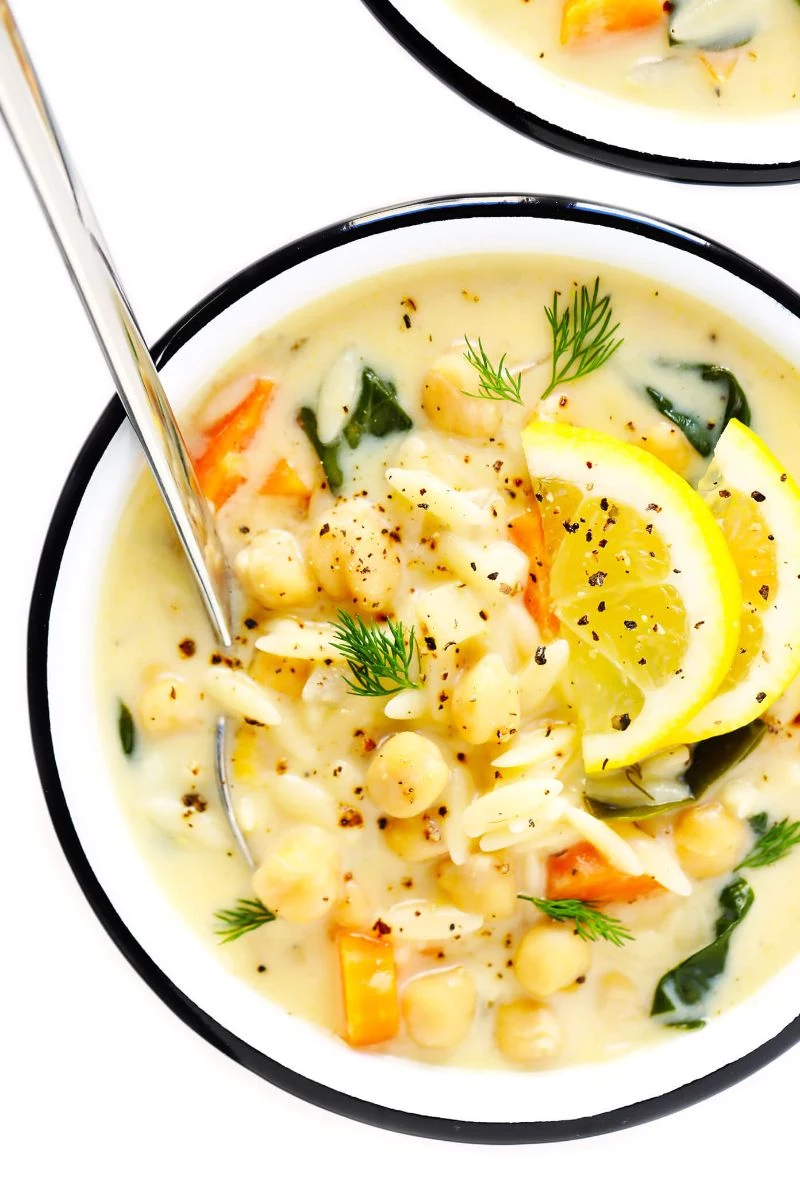
Dried Chickpeas: The Professional’s Choice
In pretty much any professional kitchen, dried chickpeas are the only way to go. Why? The flavor and texture are just flat-out better. They cook up with a nuttier, earthier flavor and a firm, satisfying bite that canned versions can’t quite match. They do take a little foresight, but the payoff is huge.
By the way, the budget angle here is a massive win. A one-pound bag of dried chickpeas usually runs about $2-$4 at most grocery stores and gives you three to four times the amount of a single can. It’s one of the best deals in the whole store.
The All-Important Soak: Please, don’t skip the soak. It does more than just rehydrate the beans. It also starts breaking down the complex sugars that can sometimes make legumes, well, a little hard on the stomach. A good soak makes your soup better for everyone.
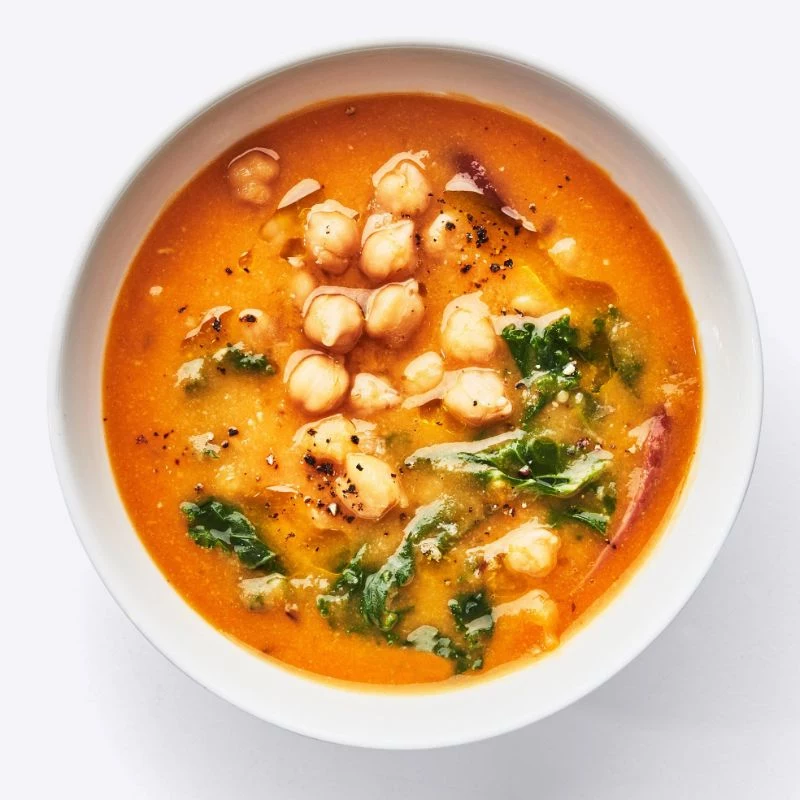
- The Best Method (Overnight Soak): Just put the chickpeas in a big bowl and cover them with a good four inches of cold water. Seriously, don’t skimp on the water—they’ll about triple in size. Let them hang out on the counter for 8 to 12 hours.
- The Quick Method (If You Forgot): In a pinch? Toss the chickpeas in a pot, cover with water, and bring to a rolling boil. Let them boil for 5 minutes, then kill the heat, pop a lid on, and let them sit for an hour. It works surprisingly well.
Quick tip: Add a teaspoon of baking soda for each quart of soaking water. The alkalinity helps break down the skins, so they cook faster and more evenly. Just be sure to rinse them really, really well afterward to get rid of any soapy taste.
Canned Chickpeas: The Weeknight Warrior
Let’s be real, we don’t always have a day to plan for soup. I absolutely keep a few cans of chickpeas in my pantry for those last-minute meals. There’s zero shame in the canned game!
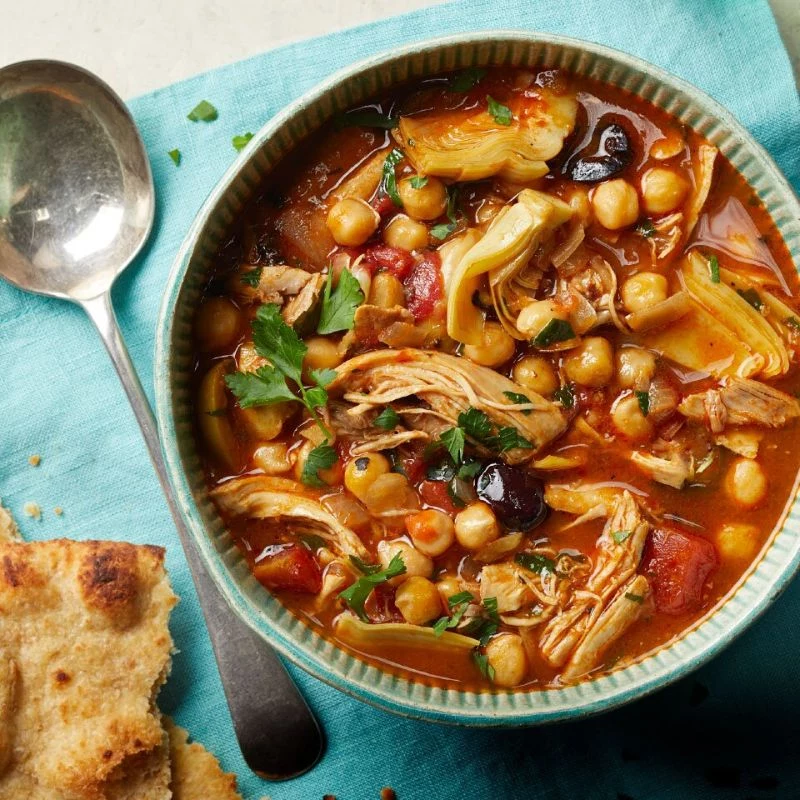
The key is to give them a little TLC first. Canned chickpeas come packed in a starchy liquid called aquafaba. It can sometimes taste a bit metallic and is often loaded with sodium. Always, always dump them into a colander and rinse them under cold water for a solid 30 seconds. This one simple step makes a world of difference.
Good to know: Don’t just pour that aquafaba down the drain! It’s a pretty amazing ingredient on its own. You can whip it up just like egg whites to make vegan meringues or use it in dressings. It’s a great example of the no-waste mindset in pro kitchens.
Building That Deep Flavor Foundation
A truly memorable soup is built in layers. You can’t just toss everything in a pot at once and cross your fingers. The first few steps are where all the magic really begins.
The Sauté: Your Flavor Starting Line
This is it. The most important step. Almost every great soup starts by sautéing aromatic vegetables in fat. The classic combo is a mirepoix—a simple mix of onion, carrot, and celery. For a good-sized pot of soup that serves around 4-6 people, I usually start with 1 large onion, 2 medium carrots, and 2 celery stalks.
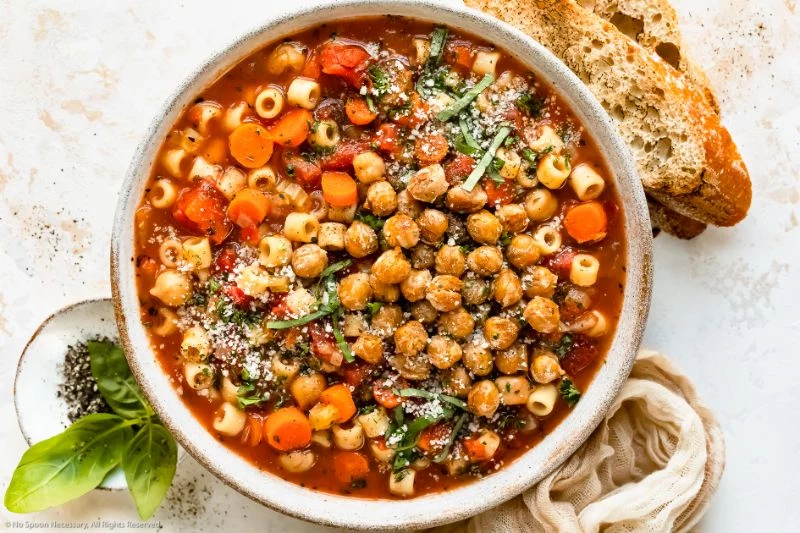
You’ll want to heat up some olive oil or butter in a heavy-bottomed pot over medium heat. Using a heavy pot is important because it spreads the heat out evenly and keeps your veggies from burning. Add the onions first and let them cook for 5-7 minutes, stirring every so often. You want them to get soft and translucent, not browned. This is called “sweating,” and they should start to smell sweet. Once the onions are soft, toss in the carrots and celery and cook for another 5 minutes.
Why that order? Onions have more water and need a head start to soften up. The carrots and celery cook faster, and adding them later keeps them from turning into mush.
Waking Up Your Spices
Garlic, along with dried spices like cumin or paprika, has flavor compounds that are fat-soluble. To get the most bang for your buck, you need to “bloom” them. After your main veggies are soft, add your minced garlic and dried spices directly to the hot oil and vegetables. Stir them constantly for about 30 to 60 seconds, until they become incredibly fragrant. This quick step unlocks a whole new level of flavor that you just can’t get by dumping them into liquid.
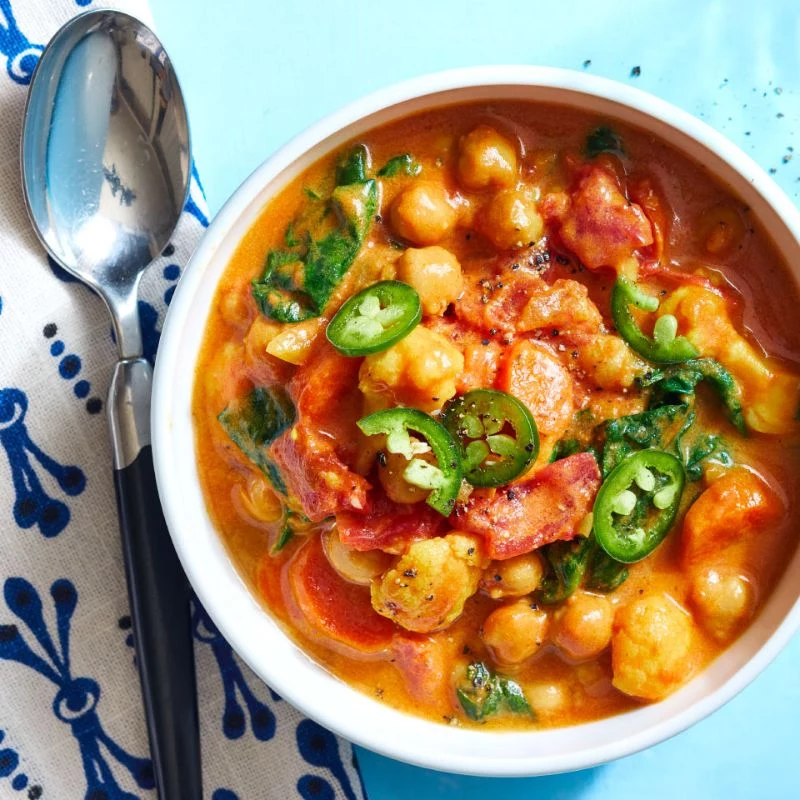
Heads Up! Common Chickpea Soup Mistakes
Before we get to the recipe, let’s talk about a couple of common pitfalls I see all the time. Avoiding these will save you a lot of frustration.
- The #1 Mistake: Adding salt or acidic ingredients (like tomatoes or lemon juice) to DRIED chickpeas too early in the cooking process. Acid and salt can tighten up the structure of the beans and prevent them from ever getting truly soft and creamy. Always wait until the chickpeas are tender before you add salt and other seasonings.
- Forgetting to Top Off Liquid: Dried chickpeas are thirsty. They will absorb a surprising amount of broth as they simmer. Keep an eye on the pot and add more hot water or broth if the soup looks too thick.
Okay, Let’s Put It All Together: My Go-To Chickpea Soup
Here’s the master plan to bring all these techniques to life. Remember, one cup of dried chickpeas will swell to about three cups once cooked, which is about what you get from two standard 15-ounce cans.
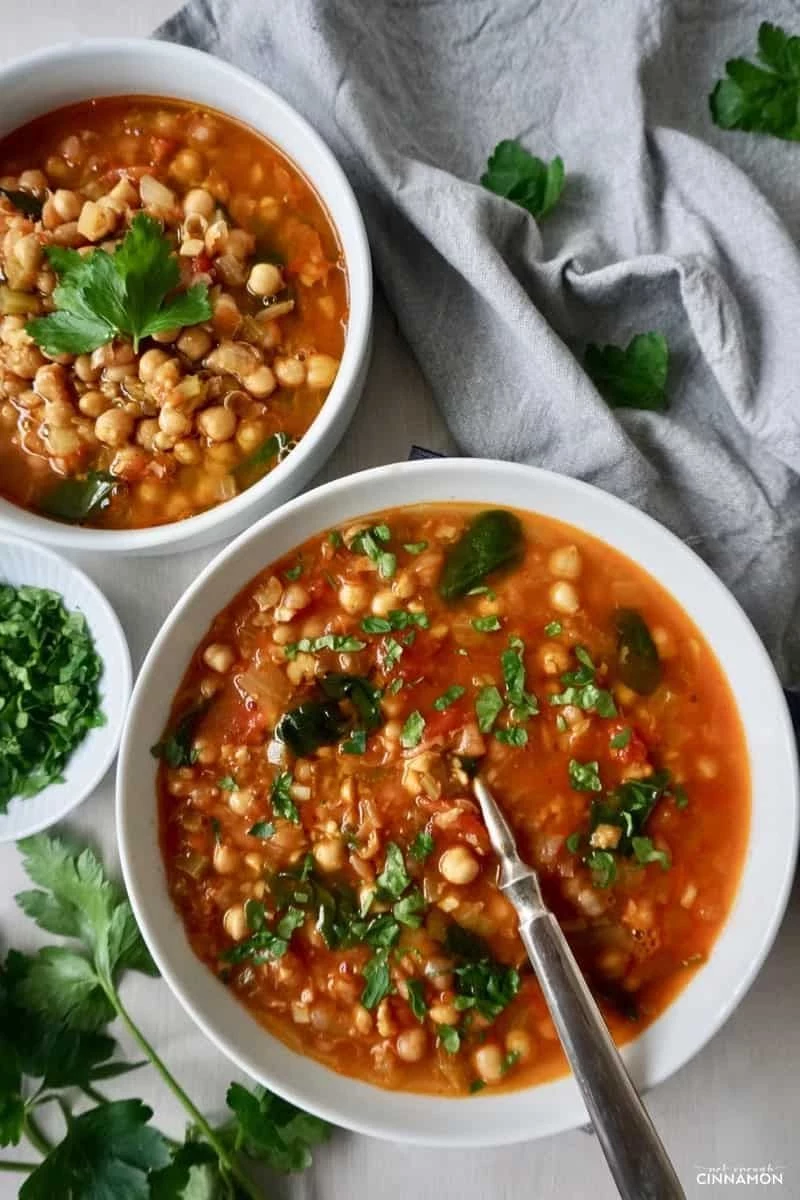
What You’ll Need:
- 2 tablespoons olive oil
- 1 large yellow onion, chopped
- 2 medium carrots, chopped
- 2 celery stalks, chopped
- 4-6 cloves garlic, minced
- 1 teaspoon ground cumin
- 1 teaspoon smoked paprika
- 1/2 teaspoon ground coriander
- 1 cup dried chickpeas, soaked overnight (or two 15-ounce cans, rinsed and drained)
- 6-8 cups good quality vegetable or chicken broth
- Salt and fresh black pepper to taste
- For finishing: A lemon, fresh parsley, and good extra virgin olive oil
The Steps:
- Sauté the Base: Heat the olive oil in a large, heavy pot or Dutch oven over medium heat. Add the onion, carrots, and celery with a small pinch of salt. Cook, stirring occasionally, until softened and sweet, about 8-10 minutes.
- Bloom the Aromatics: Add the minced garlic, cumin, smoked paprika, and coriander. Stir constantly for about 1 minute until everything is wonderfully fragrant.
- Combine and Simmer: Add your soaked-and-rinsed dried chickpeas and 6 cups of broth. Bring the soup to a boil, then reduce the heat to low, cover, and let it simmer gently. This is where patience pays off. The chickpeas will need about 60-90 minutes to become perfectly tender. (If using canned chickpeas, you only need to simmer for 20-30 minutes for the flavors to meld).
- Pressure Cooker / Instant Pot Method: Sauté the veggies and bloom the spices using the sauté function. Add the soaked chickpeas and broth, seal the lid, and cook on high pressure for 15 minutes. Let the pressure release naturally for 10 minutes before opening. It’s a fantastic shortcut.
- Season and Finish: Once the chickpeas are tender, it’s time to season. Add salt and pepper to your liking. Don’t be shy!
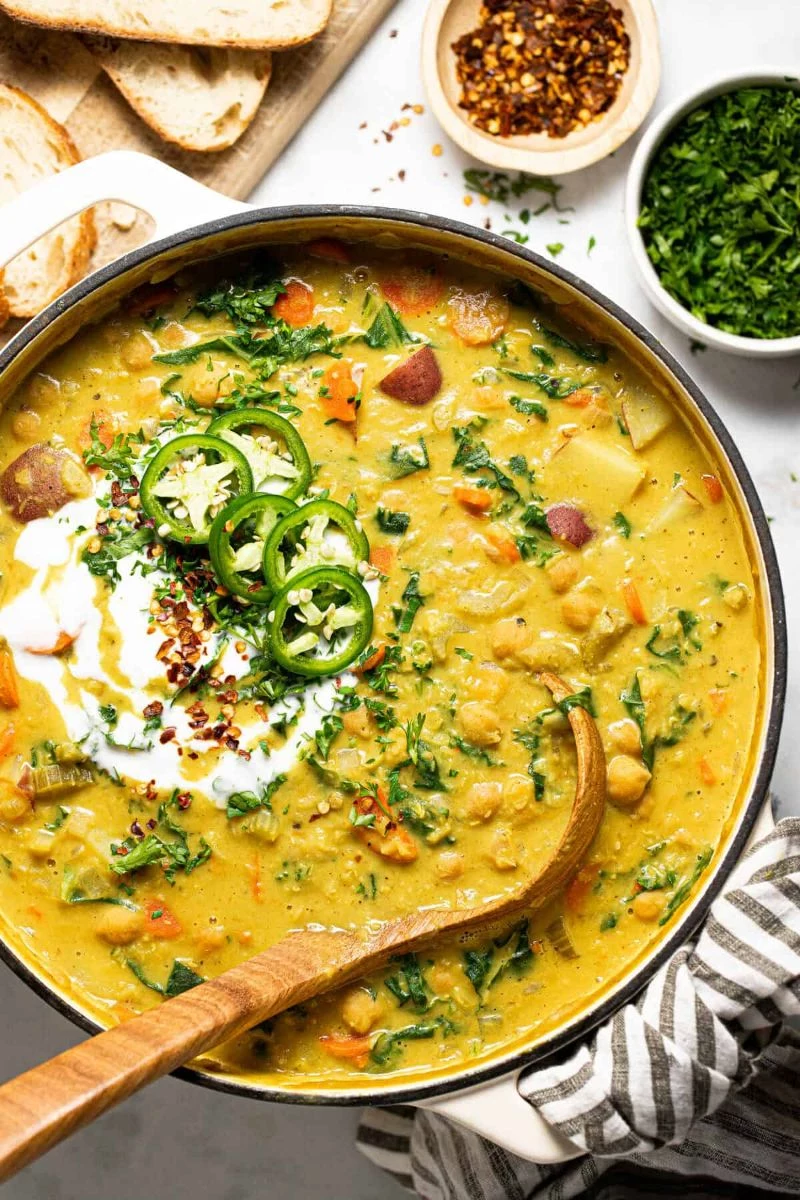
The Final Touch: How to Finish Like a Pro
This is how you take a great soup and make it spectacular. Right before serving, stir in a generous squeeze of fresh lemon juice. It wakes up all the flavors. Ladle the soup into bowls, and then add a swirl of high-quality extra virgin olive oil and a sprinkle of chopped fresh parsley. The brightness from the lemon, the richness of the oil, and the freshness of the herb are a perfect trifecta.
Bonus: No Time for Soup? Try This 5-Minute Fix
In a serious rush? You can still get a taste of this magic. Heat a splash of olive oil in a skillet, add a minced garlic clove and cook for 30 seconds. Toss in a rinsed can of chickpeas with a big pinch of smoked paprika and cumin. Sauté for a couple of minutes until warm, then finish with a squeeze of lemon juice and a pinch of salt. It’s not soup, but it’s a delicious, healthy snack that shows you the power of these simple flavor principles.
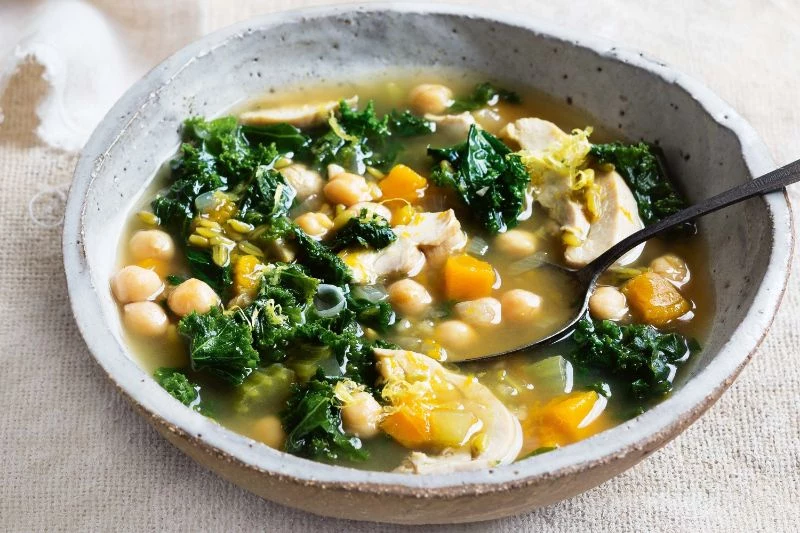
Inspirational Gallery
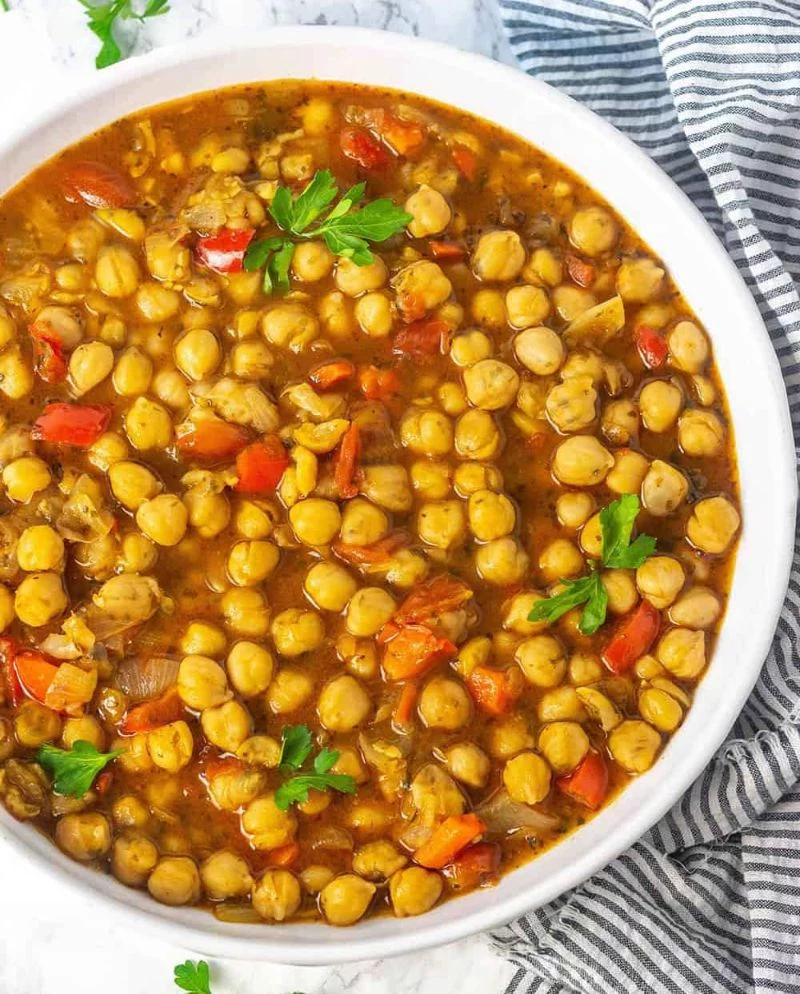
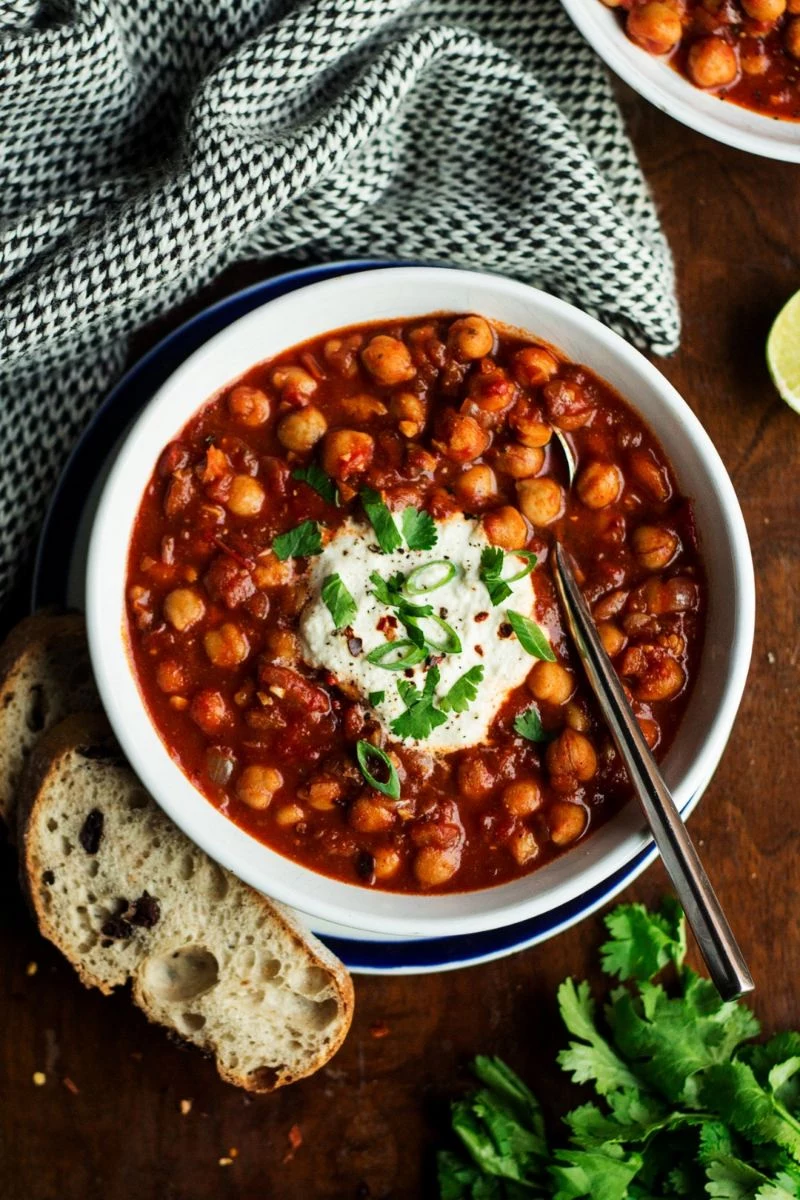
Take your soup on a trip around the Mediterranean with a simple change of spice. Each blend creates a completely different experience:
- Spanish-Style: Sauté sliced chorizo with your onions and add a generous teaspoon of smoked paprika—look for Pimentón de la Vera for authentic flavor.
- Moroccan Twist: Introduce warmth with ½ tsp each of cumin, coriander, and turmeric, plus a pinch of cinnamon. A handful of chopped dried apricots stirred in at the end adds a touch of sweetness.
- Italian Flavors: Simmer the broth with a sprig of fresh rosemary and a bay leaf. A Parmesan rind tossed into the pot adds incredible umami depth.
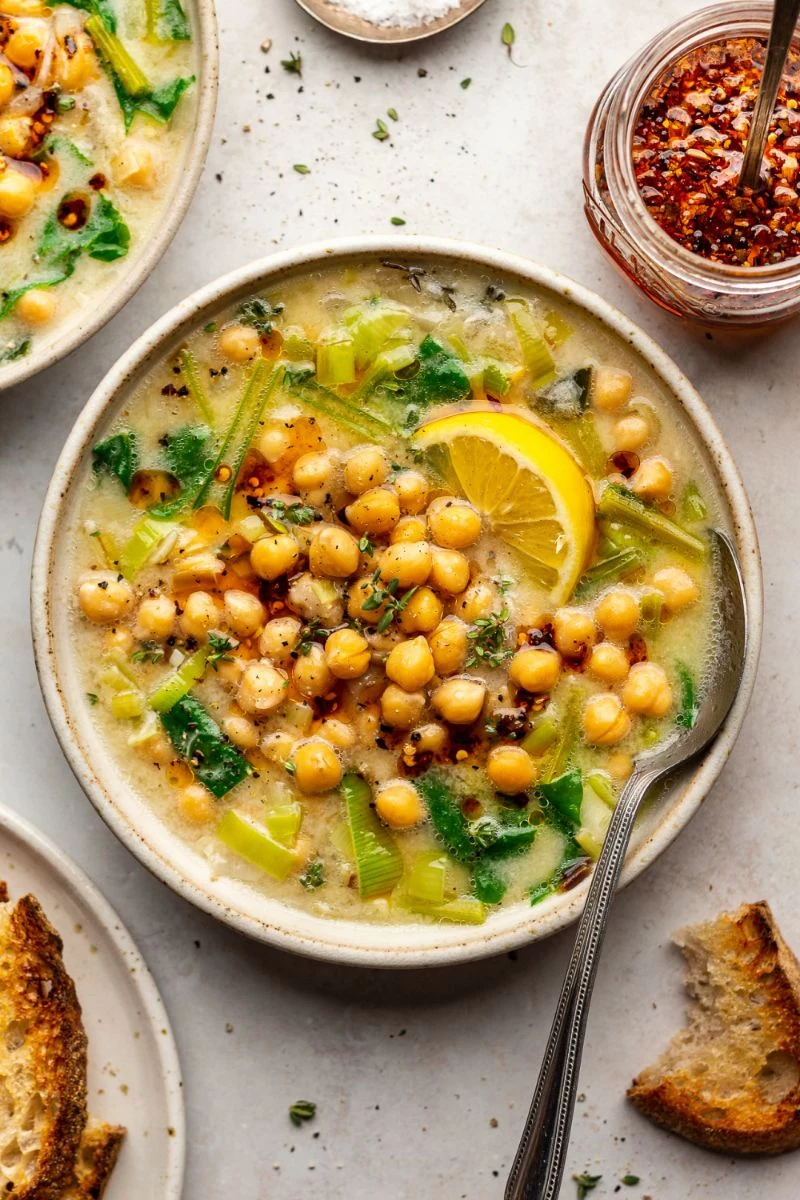
The liquid from canned chickpeas, known as aquafaba, is a surprisingly powerful vegan egg substitute often discarded.
Instead of pouring it down the drain, save it. You can whip it into airy meringues, use it as a binder in baking, or even shake it in a cocktail like a whiskey sour to create a stable, silky foam. It’s a brilliant zero-waste kitchen hack.
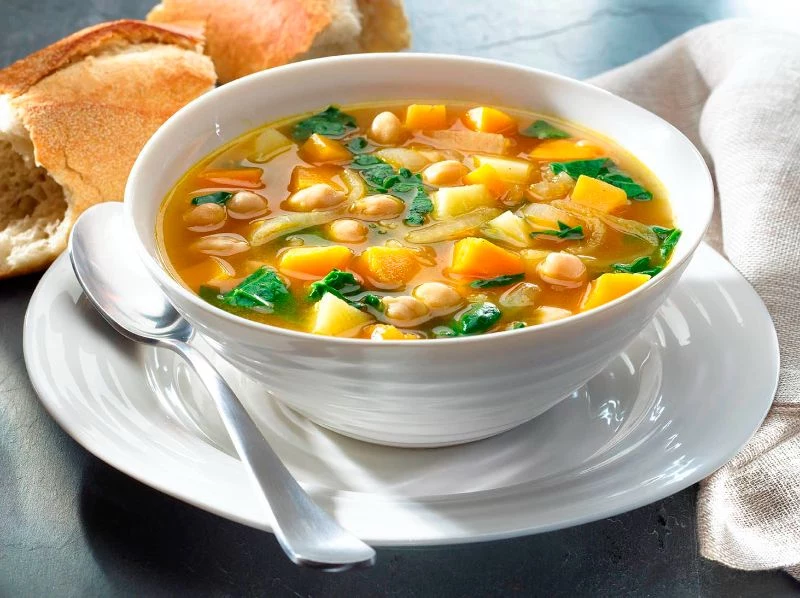
How do I get a creamy soup texture without using any dairy?
The secret is to use the chickpeas themselves. Once the soup is cooked, use an immersion blender (a Braun MultiQuick or Cuisinart Smart Stick are kitchen workhorses) to partially blend the soup directly in the pot. Blending just one-third of the liquid releases the chickpeas’ natural starches, creating a velvety base while leaving plenty of whole beans for a satisfying texture.
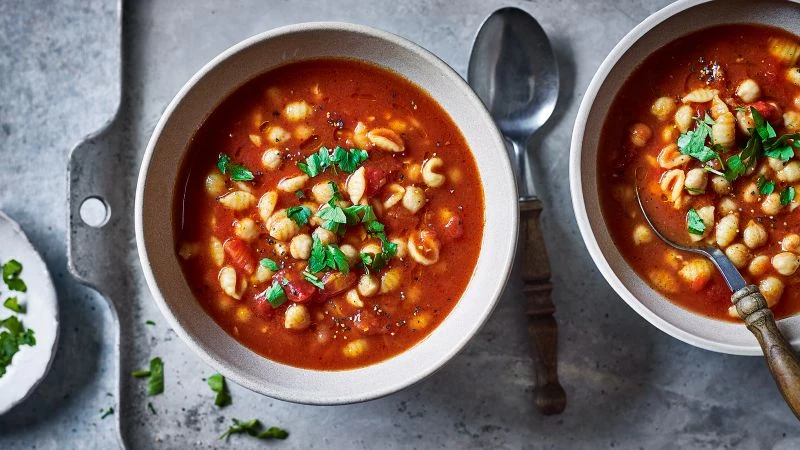
- A velvety, consistent texture.
- Deeply infused flavor in every spoonful.
- Less cleanup than a traditional blender.
The secret? An immersion blender. It allows you to thicken the soup right in the pot, creating a creamy foundation that carries the flavor of the aromatics and spices perfectly, all without the hassle of transferring hot liquid.
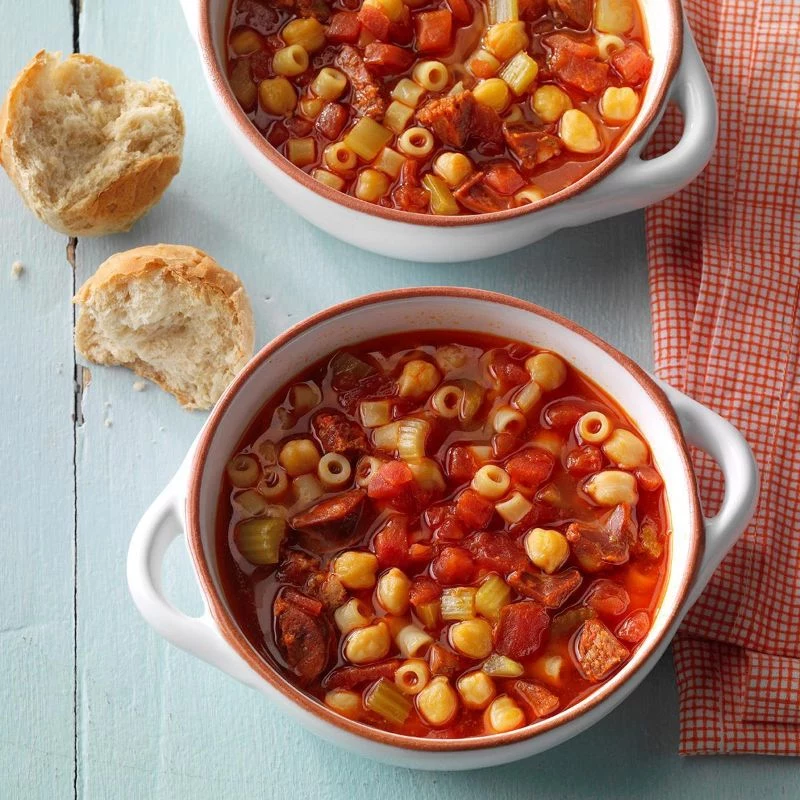
The Acid Test: If your soup tastes flat or heavy after seasoning, the culprit is likely a lack of balance. A final, generous squeeze of fresh lemon juice just before serving is a non-negotiable step for pro chefs. It doesn’t make the soup sour; it brightens and elevates all the other flavors, making them pop.
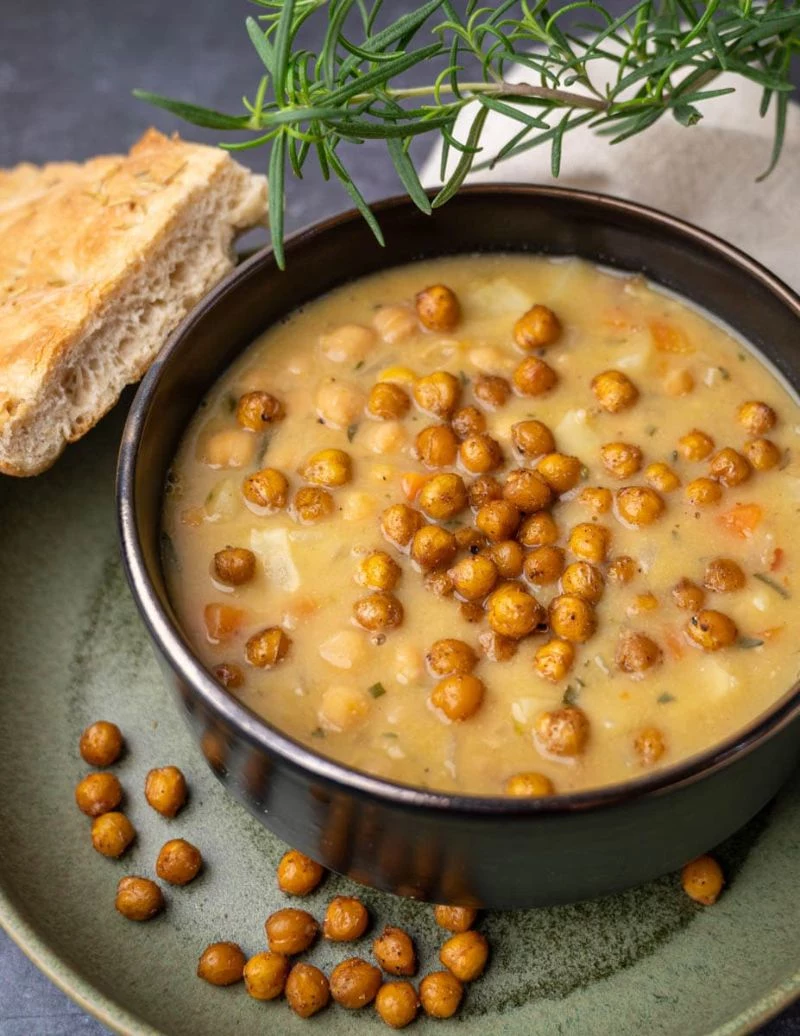
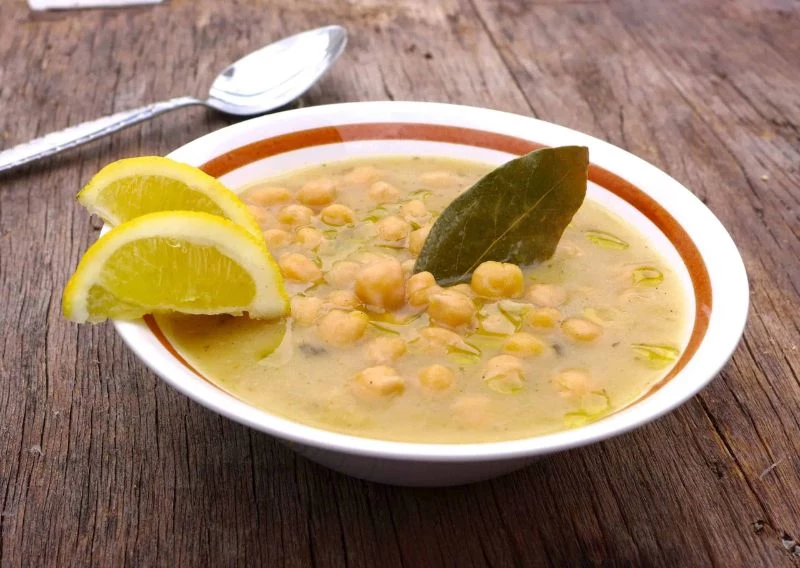
Don’t just toss in a can of chickpeas. Quality matters. Brands like Goya offer a consistently firm yet tender texture that holds up well in a long simmer, while organic options from brands like Eden Foods are often packed in kombu seaweed, which helps make the beans more digestible.
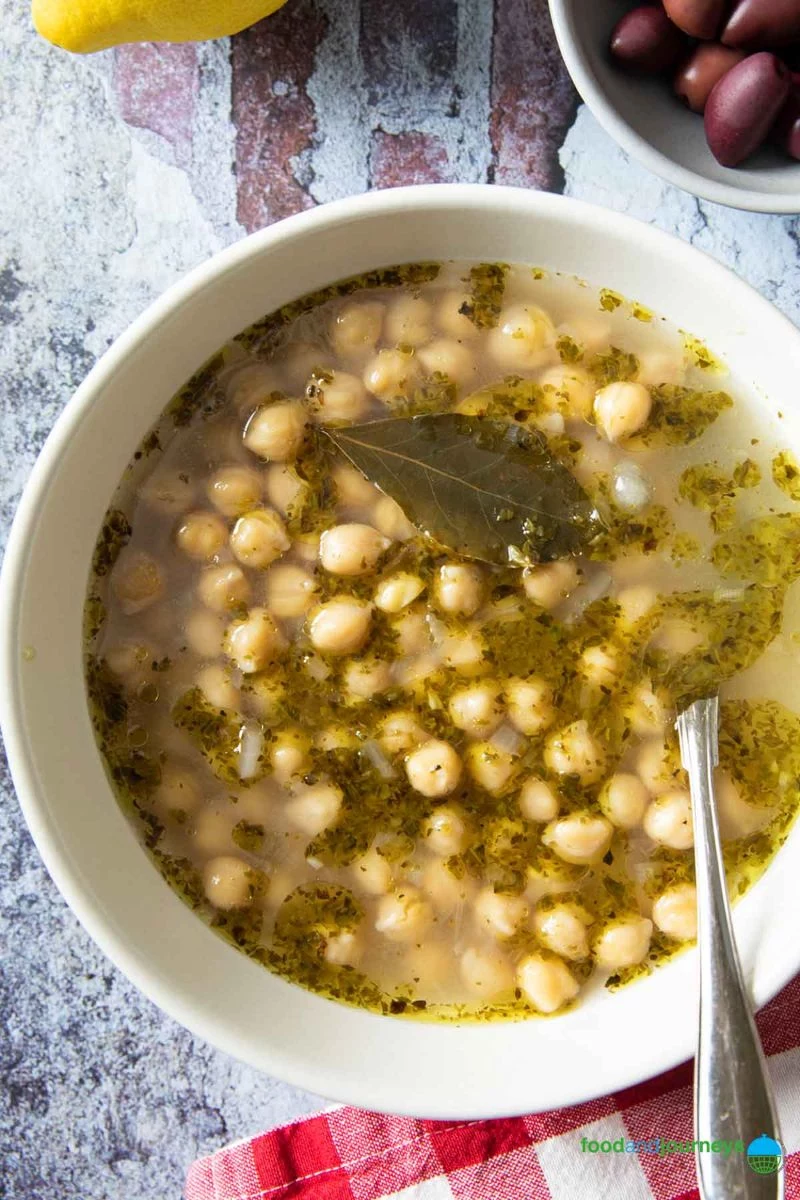
For Freezing: Cool the soup completely before portioning it into freezer-safe containers. Freezing it while still warm can cause ice crystals to form and can make the chickpeas’ texture mealy upon reheating. Leave an inch of headspace for expansion, and it will keep beautifully for up to three months.
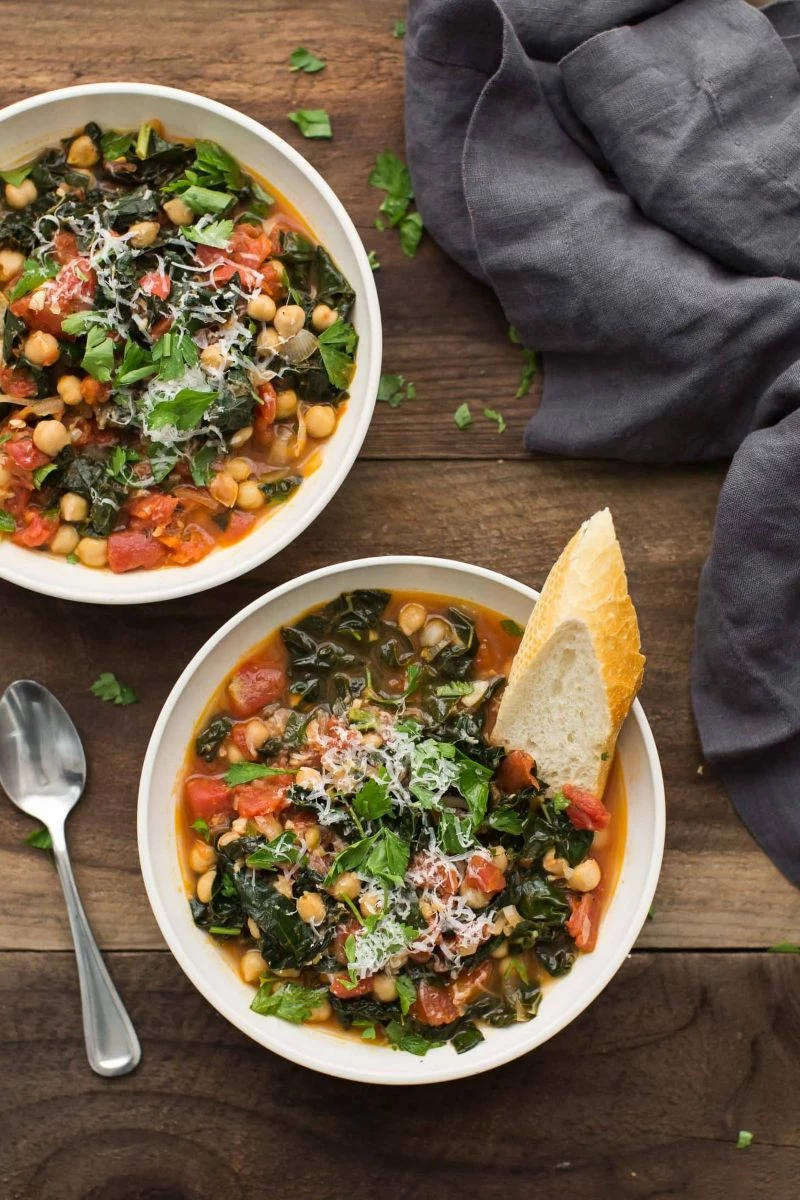
Option A (Chicken Stock): Provides a rich, savory backbone with a classic, comforting flavor and a fuller body thanks to natural gelatin.
Option B (Vegetable Stock): A lighter, cleaner option that lets the earthy flavor of the chickpeas and other vegetables shine through. Use a quality brand like Pacific Foods for a less sweet, more robust flavor.
Your choice defines the soup’s final character: hearty and traditional, or bright and vegetable-forward.
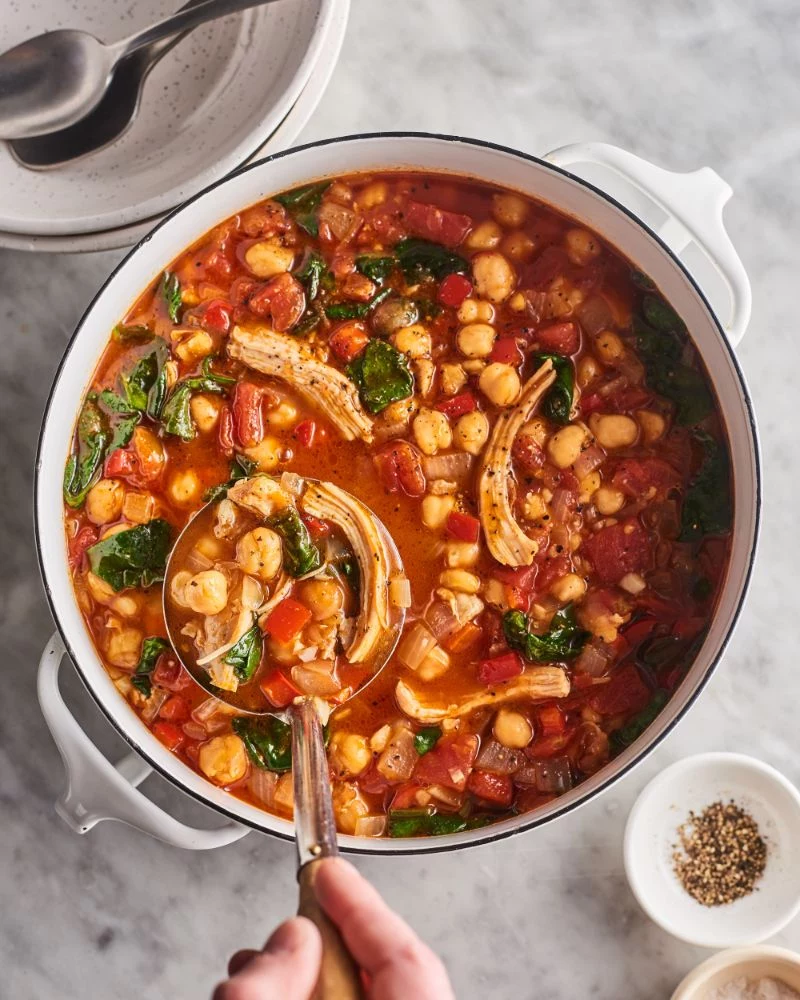
Elevate the final presentation in the bowl. A simple drizzle of peppery, high-quality extra virgin olive oil, a sprinkle of flaky sea salt like Maldon, and some freshly cracked black pepper is the classic trio that signals care and quality.
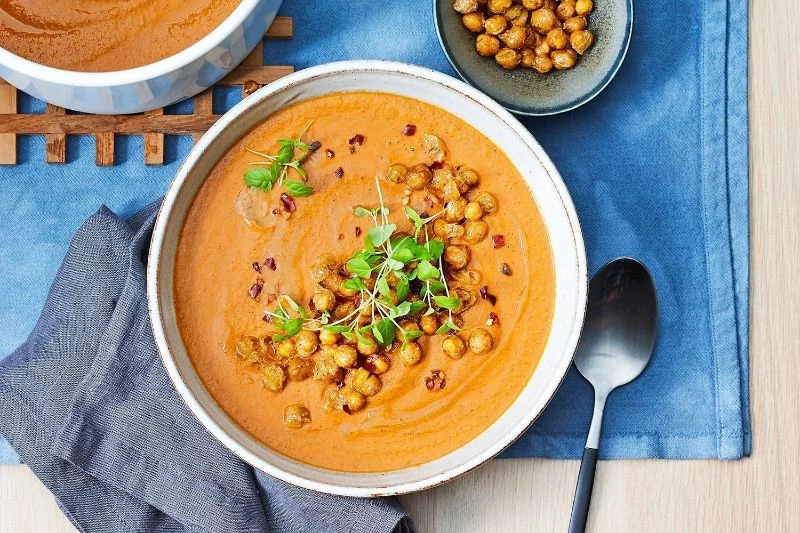
- Fresh, tender greens like spinach or baby kale.
- A handful of small pasta, like ditalini or orzo.
- A dollop of vibrant pesto or spicy harissa.
The trick? Add these in the last 5 minutes of cooking. This ensures the greens wilt perfectly without becoming drab, the pasta cooks to al dente, and the condiments infuse flavor without breaking down.
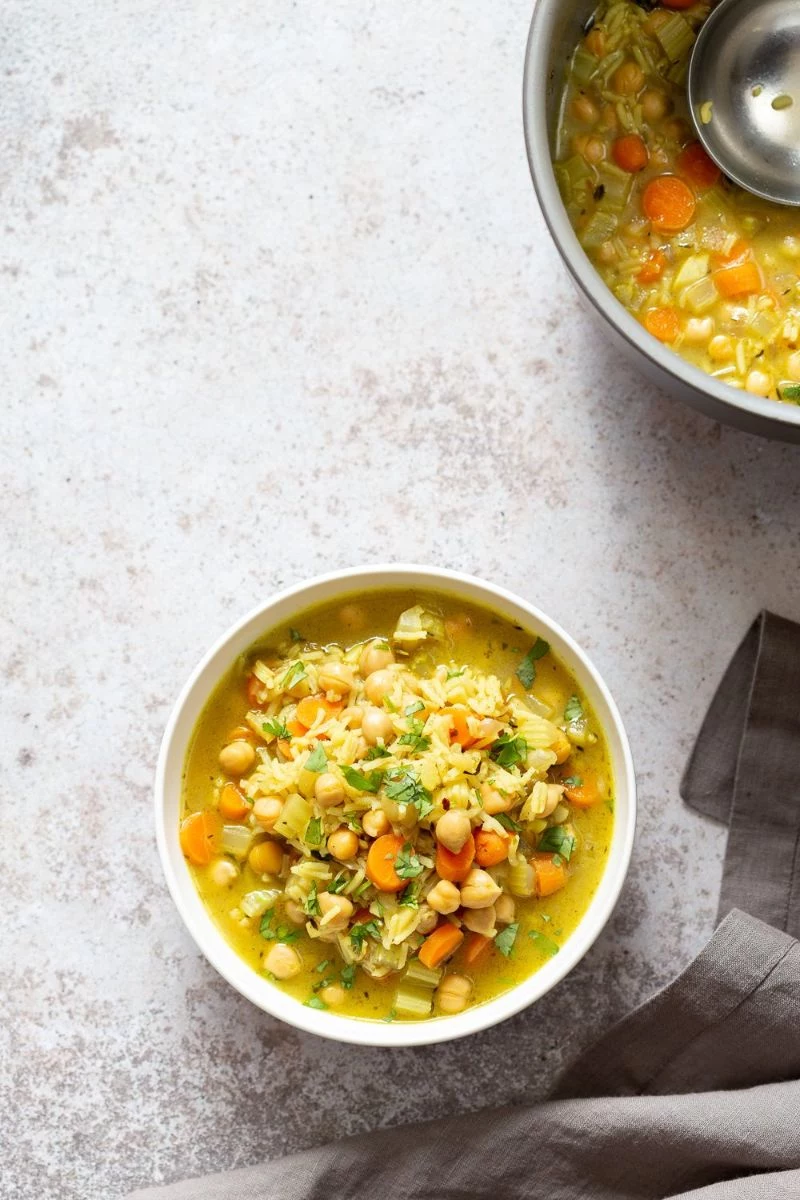
Chickpeas are one of the oldest cultivated legumes on Earth, with 7,500-year-old remains found in the Middle East.
When you make this soup, you’re not just cooking a simple meal; you’re participating in a culinary tradition that stretches back millennia, connecting your kitchen to the very dawn of agriculture.
To add a surprising layer of umami, stir a tablespoon of white miso paste into the broth along with your other seasonings. It will dissolve completely, lending a savory depth that no one can quite place but everyone will love. It’s the secret ingredient that makes a good soup unforgettable.










